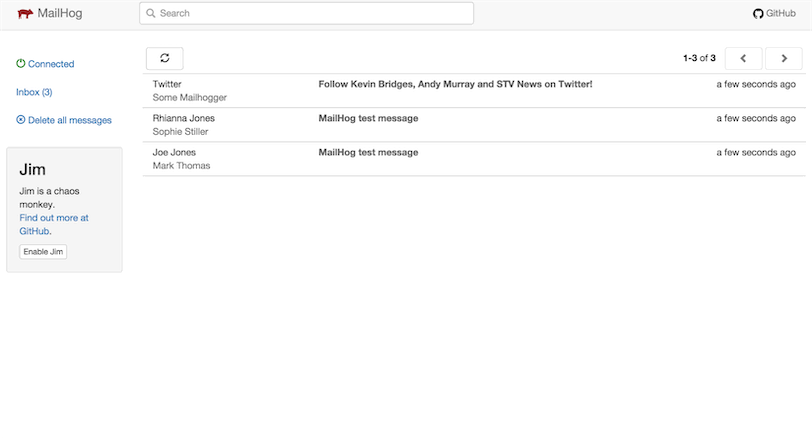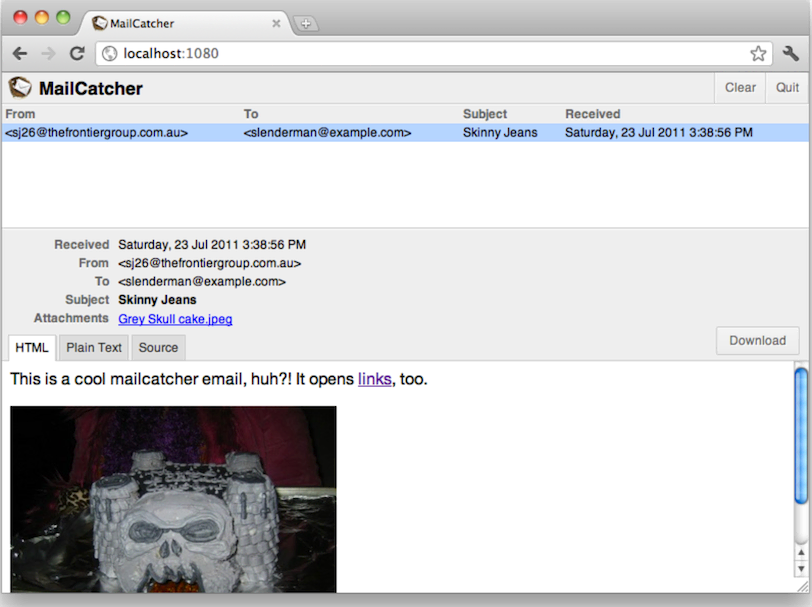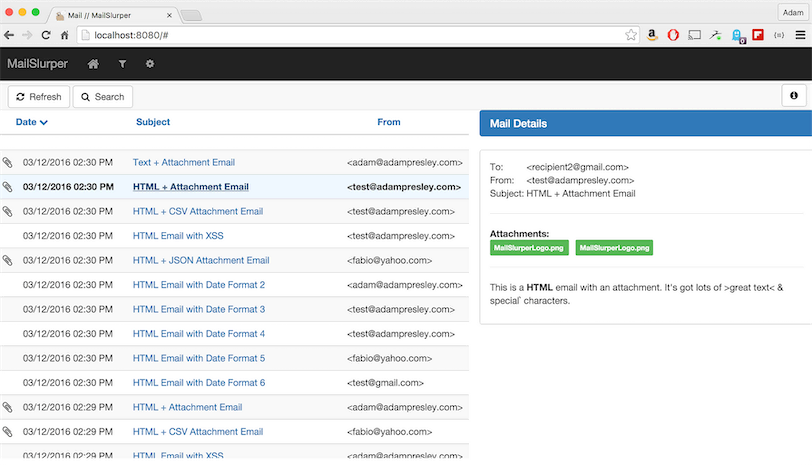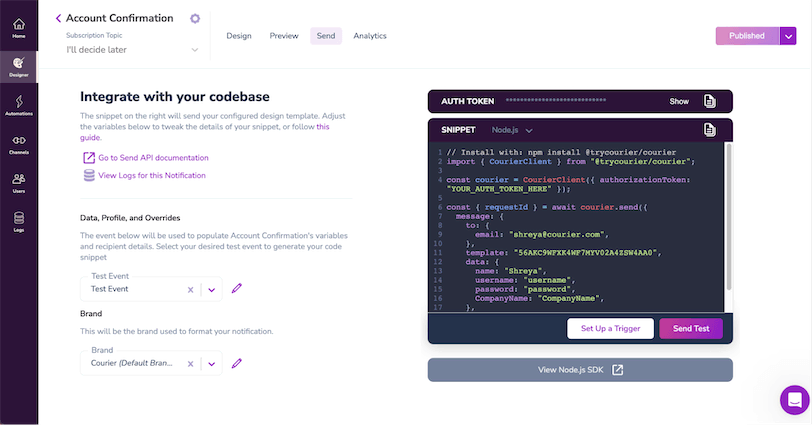 Figure - Test send notification templates in Courier
Figure - Test send notification templates in Courier
Imagine how you feel when you open a company’s email and discover it’s full of errors.
Misplaced images, broken buttons, and typos.
How does that affect your perception of the company? What if that email was something transactional and critical to using the product - like a password reset link or a credit card expiration notice?
Statistics reveal that the emails you’re receiving in your inbox are growing in complexity and potential renderings, so making sure that a business audience receives correct emails is harder than ever before. If you're lucky, the notification platform you use may offer features like a testing environment or an AI-based editor integrated into the templating tool. For example, Courier’s notification development platform has a built-in ChatGPT editor. This is an excellent starting point that can help refine clunky language and optimize the message for other channels if email is just one part of an automated notification sequence. But once you have the language right, further testing is critical.
Email marketing can have an ROI of up to 40:1, yet untested emails can leave large amounts of these earnings on the table.
For example, if you send a campaign to 10,000 people to promote a $500 product, with a very good conversion rate of five percent, your revenue potential is $250,000. However, if your company doesn’t optimize an email for mobile devices like eighty percent of businesses, you risk your mobile audience seeing a broken email, and your company losing potentially thousands of dollars.
Based on these numbers, even if only twenty percent of your users have a broken mobile experience, you’re going to lose $50,000. That’s a lot of zeros for a single email.
Luckily, there are a number of excellent email testing tools out there to help you avoid sending broken emails.
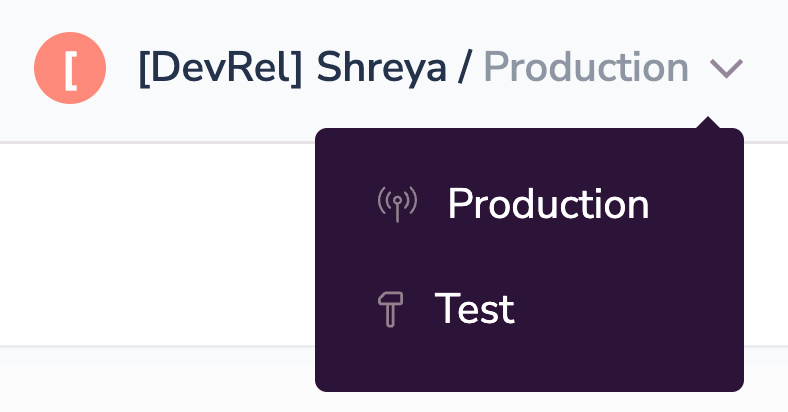 Figure 2 - Create a test environment in Courier
Figure 2 - Create a test environment in Courier
In this guide, you’ll learn about the top email testing tools that you can use to check your campaigns and maximize your profits. You’ll be introduced to:
Comparison Tables Features
Before getting into the particulars of each email service, here are a couple of overview charts comparing a variety of features and pricing details.
Features
| MailHog | Mailtrap | MailCatcher | Litmus | Mailinator | Email on Acid | MailSlurp | GlockApps | MailSlurper | Optimizely | |
|---|---|---|---|---|---|---|---|---|---|---|
| SDKs Available | ✗ | Node.js, Ruby | ✗ | ✗ | ✗ | ✗ | C#, Go, Node.js, JavaScript TypeScript, PHP, Python, Java, Ruby | ✗ | ✗ | JavaScript |
| Launched | 20 Apr 2014 | 2011 | 18 Jan 2018 | 16 May 2005 | 2007 | March 2009 | 2017 | 2009 | 4 Aug 2015 | Jan 2010 |
| Actively Maintained | No | Yes | No | Yes | Yes | Yes | Yes | Yes | No | Yes |
| Open Source | Yes | No | Yes | No | No | No | No | No | Yes | No |
| GitHub Stars | 11.4K | ✗ | 5.8K | ✗ | ✗ | ✗ | ✗ | ✗ | 1.2K | ✗ |
| Has Hosted Service | Yes | Yes | No | Yes | Yes | Yes | Yes | Yes | Yes | Yes |
| Can Self-host | No | No | Yes | No | No | No | Yes | No | No | No |
Pricing (Monthly)
| MailHog | Mailtrap | MailCatcher | Litmus | Mailinator | Email on Acid | MailSlurp | GlockApps | MailSlurper | Optimizely | |
|---|---|---|---|---|---|---|---|---|---|---|
| Free Plan | ✔ | ✔ | ✗ | ✔ | ✗ | ✔ | ✔ | ✔ | ✗ | |
| Paid Plan | ✗ | $14.99-399.99$ | ✗ | $99-$199 | $99-$594 | $99-$599 | $30-$451 | $79-$199 | $30-$451 | Non-disclosed |
| Customizable Enterprise Plan | ✗ | ✗ | ✗ | ✔ | ✗ | ✔ | ✗ | ✔ | ✗ | Non-disclosed |
MailHog
MailHog is an open source email testing tool designed to let developers test their emails during the development phase of a project.
The tool uses a fake SMTP server underneath to catch your emails and show them to you in a comfortable web interface. Alternatively, you can retrieve them using the tool’s JSON API.
Despite not being actively maintained, MailHog counts over 11K stars on GitHub. The project enjoys great popularity in the dev community, which praises it for its simplicity and small size. When built and run using Go, the tool doesn’t even require installation.
Pros
- MailHog is free and open source.
- It’s lightweight and has no need for installation.
- It provides a web interface to check your emails during the development phase.
- It saves your emails in a MongoDB database.
Cons
- The tool accommodates basic situations when you need to test your app’s email-sending capabilities during development, but it doesn’t support more complex features like HTML testing or spam filter pre-checks.
- You need to configure the tool before you can use it.
- The project hasn’t received new updates and commits in months.
When to Use MailHog
MailHog is a great option if you’re a developer looking for a free overview of what your app emails look like plus a basic capacity for debugging your email-sending flows.
Mailtrap
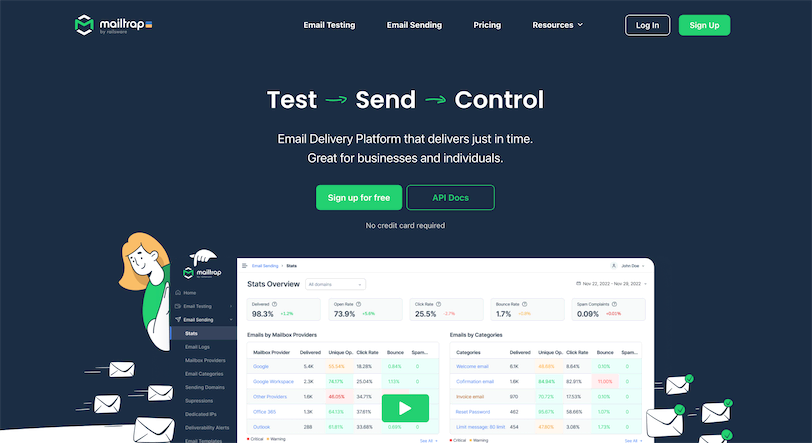
Mailtrap is an email delivery platform that allows you to test your emails at different stages of the feature development cycle, from dev to staging and QA.
After a quick setup, Mailtrap will let you test all your emails by sending them to a fake server, banishing the chance of sending accidental emails to your clients while testing new features.
Once you receive your email for testing, Mailtrap will check its HTML and CSS, listing all the issues it found. Unlike some of the other tools in this roundup, Mailtrap is not capable of testing an email’s appearance on a wide variety of email providers—its visual testing is limited to general assessment of your emails’ overall look and identification of possible HTML rendering issues.
Pros
- Mailtrap offers HTML and CSS testing to find rendering errors in your emails.
- It has a spam analysis feature to ensure your email campaigns don’t end up in your audience’s clutter inbox.
- It provides an email forwarding testing feature and has support for multiple inboxes.
- It’s trusted by prevalent organizations like PayPal and Adobe.
- Unlike many of its competitors, Mailtrap supports forwarded email testing.
Cons
- It has very meager sending limits for the free plan.
- Even for paid plans, it has limited hourly support.
- It doesn’t offer support for specific email providers like Gmail or Outlook.
When to Use Mailtrap
Mailtrap is a great option when you need a developer-centric approach to email testing during your product’s development phase, all the way from the early stages of a feature until QA.
MailCatcher
MailCatcher runs a simple SMTP server, displaying in a web interface any message you forward to the tool.
Once received, you can further analyze each message you sent to MailCatcher. You can double-check its body and HTML code, test the links, and view any attachments.
MailCatcher is not a web service, so you’ll need to host it somewhere. While that might be complicated in terms of setup for some individuals, the tool allows its users freedom to work with any tech stack they want, all the while ensuring that their tested emails will never reach real users.
Pros
- MailCatcher is free and open source.
- It supports email attachments.
- It allows you access to the HTML code of your emails.
- Working on localhost, it prevents you from spamming real users.
- It works with any tech stack.
- It updates in real time when new emails arrive.
- It purges emails when you stop the process running the tool.
Cons
- The tool is not actively maintained, with the latest release dated to March 2022.
- Since MailCatcher is not a web service, you need to take care of hosting it somewhere, which might require some skills in setting it up.
- Since the tool works only on localhost, it mainly accommodates the need for individuals rather than organizations who want to share their testing results.
When to Use MailCatcher
MailCatcher is a great option when you want to individually test your emails inside your project, regardless of your tech stack.
Litmus

Litmus is an all-in-one email marketing platform that provides the tools needed by every department in your organization to create successful email campaigns.
Trusted by large companies like Ford and J.P. Morgan, Litmus empowers your company to create email campaigns that are optimized from the start. The platform provides an editor to build your emails and get actionable AI insights about how to convert more users, with no coding required.
Before hitting send, Litmus will show you a checklist of strategic areas you can optimize to increase your email performance and delivery. Plus, you can test the appearance of your emails on over 100+ email clients and, once your campaign starts, Litmus will connect into your marketing stack to analyze your marketing results.
Pros
- Litmus is an all-in-one platform, with tools accommodating the needs of every department in even large companies, from marketing to R&D.
- It allows you to test your emails on over 100 email providers.
- It integrates with your marketing team apps.
- It offers pre-send spam testing.
- It provides AI suggestions to refine your emails and an actionable checklist of improvements before you hit send.
Cons
- Even the basic plan of Litmus can be quite pricey for smaller companies.
- This solution could be overkill if you just want to check the look of your emails once they’re sent.
- Reviews of this tool suggest its UI is not intuitive, and it might take a while before you get the hang of the platform.
When to Use Litmus
Litmus is a great option when you’re managing a medium-to-large organization that wants to optimize and analyze every step of its marketing campaigns from start to finish.
Mailinator
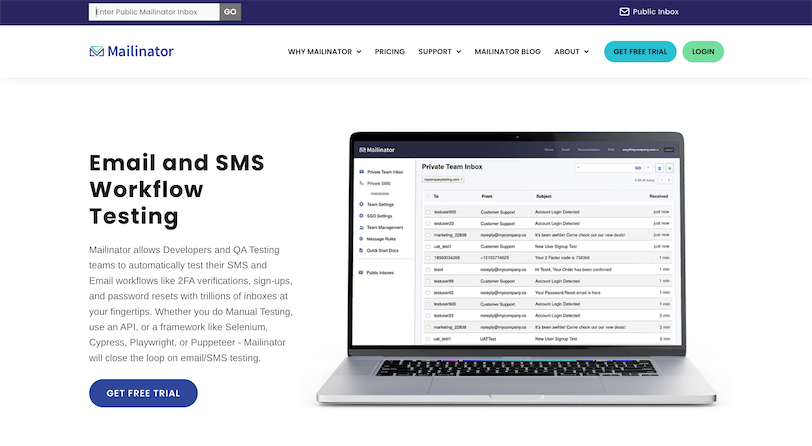
Mailinator is a free, online disposable email service. You can use it to test emails you send at any Mailinator domain address, without the need to sign up for the service.
To use Mailinator, you visit the tool’s page and enter an email name of your choosing, as long as it’s composed of Roman characters and numbers. Once you click enter, you will access the inbox of that disposable address, and you will see any email you send to it.
While this offering is incredibly helpful if you just want to test a basic email in your app, keep in mind that the inbox is public, so everybody will see the content of your email—even data you may not want to show to the world.
Pros
- Mailinator is very effective for devs and QA testers to check simple flows in your app, like a sign-up flow, or when you want to test different email copy personalizations, such as including the customer’s name in the subject line.
- It’s a free tool and requires no sign-up.
- It offers a free private inbox for verified devs and QA specialists.
Cons
- Emails on the free plan are visible to everybody, which could potentially expose private company information.
- The emails you send disappear within a few hours.
- The basic plan is quite pricey and doesn’t offer much in terms of email appearance testing on different email providers.
- There’s no support for email attachments on the basic plan.
- Sending emails to low-engagement addresses from your company’s email can damage your email domain.
When to Use Mailinator
Mailinator is a great option when you want a free and simple tool to test basic email flows in your app, like a new user sign-up or password reset flow.
Email on Acid
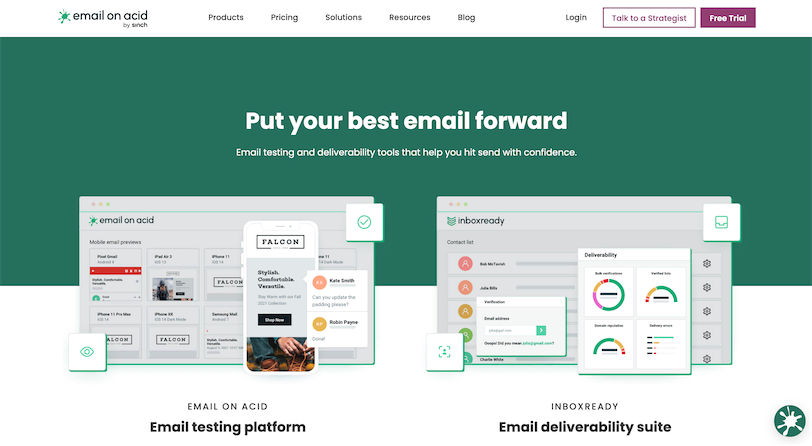
If you’re managing a large email campaign and you want it to look flawless, Email on Acid provides you with dozens of tools to achieve just that.
This platform lets you test your emails across different browsers, mobile devices, and email providers, making sure your emails look good across the board.
Email on Acid also provides a comprehensive pre-deployment workflow, verifying your emails' HTML and performing placement testing and reputation monitoring—everything you need to create a successful email campaign.
Pros
- Email on Acid is trusted by large companies like IBM and Toyota.
- It allows for collaboration, commenting, and editing between team members.
- It supports spam testing and automated testing.
- It provides the ability to test your email campaigns on an enormous variety of devices and email providers.
Cons
- No free plan is available.
- If you want to enjoy the collaboration tools of Email on Acid, you will need to purchase a premium plan, which is quite expensive compared to other tools.
- Even the single-user seat is more expensive compared to other alternatives.
When to Use Email on Acid
Email on Acid is a great option when your business runs email campaigns targeted to a large audience and you want to make sure your result will look flawless across a great variety of devices and conditions.
MailSlurp
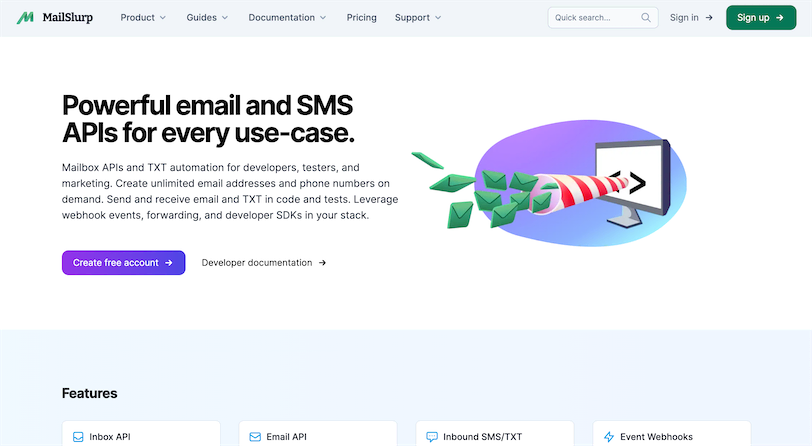
MailSlurp is not a tool dedicated solely to testing emails for devs. Yet, it provides you with an API you can plug in to your project to create disposable email addresses and receive emails for testing purposes.
The tool also gives you the ability to create permanent email inboxes with custom domains, and any email sent to these inboxes will be received by MailSlurp and stored.
You can then fetch these received emails in your code, attach webhook listeners, search emails with pattern matching, and manage email accounts programmatically.
MailSlurp poses itself as a more complete tool for devs to test email flows like user sign-up and email verification. It allows you to test your email, check the HTML code, and perform spam analysis, all independently from your tech stack of choice.
Pros
- MailSlurp is trusted by many high authority companies like Panasonic and Ring.
- It’s a more complete solution for devs to test their email flows.
- The tool offers a no-code visual dashboard to manage your email inboxes.
- It integrates with any tech stack.
- It has great documentation.
- It supports multiple email protocols like MTP, IMAP, and POP.
- It’s available both as a cloud-based solution or as self-hosted.
Cons
- It has pretty limited sending limits for free accounts.
- You need to set up the API before you can start using it.
When to Use MailSlurp
MailSlurp is a great option when you want a more complete tool to test your app email flows, independently of your tech stack of choice.
GlockApps
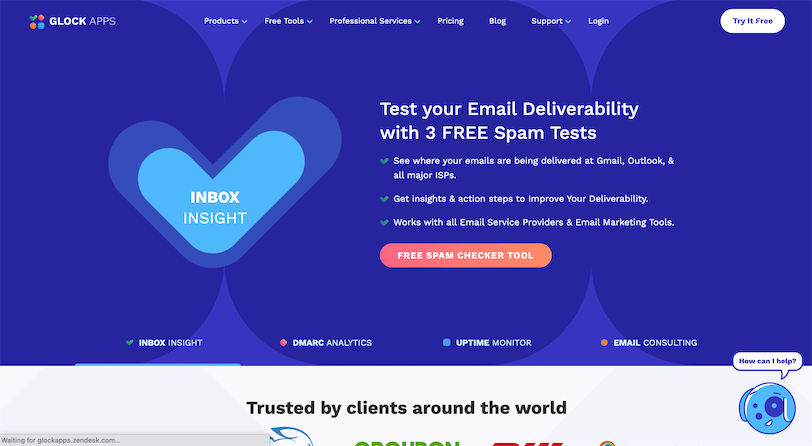
Contrary to other tools on this list, GlockApps’ goal is not related to the appearance of your emails. Rather, it’s all about making sure they get delivered across a variety of email providers your audience might use, as well as identifying potential issues that might let your emails slip into a spam inbox or get them blocked along the way.
Pros
- GlockApps supplies great deliverability testing across popular email providers like Gmail and Outlook.
- It offers domain protection against spoofing and phishing attacks.
- It provides sending IP monitoring against 50+ industry blacklists.
- It offers spam testing.
Cons
- It’s limited only to deliverability testing.
When to Use GlockApps
GlockApps is a great choice when you want insights into your email campaign deliverability and want to make sure your audience is receiving your messages from multiple providers.
MailSlurper
MailSlurper is a small SMTP server designed to let developers “slurp” and test their emails during the development phase. It promotes itself as an easy-to-use tool, removing the burden derived from setting up a full-blown email server for your testing purposes.
Just set up your app to send its emails to MailSlurper, and the tool will do the rest.
Pros
- MailSlurper is free and open source.
- It offers easy set up.
- It provides a web-based interface to check your emails.
- It’s configurable to run or any address or port.
- Its server runs on Windows, Linux, and OSX.
Cons
- The latest release dates back to May 2018.
- It offers only very basic support for email testing and offers no other features, like deliverability checks.
When to Use MailSlurper
MailSlurper is a great option if you’re a developer who wants to test an app's email sending flows without the hassle of setting up a full-blown email server.
Optimizely
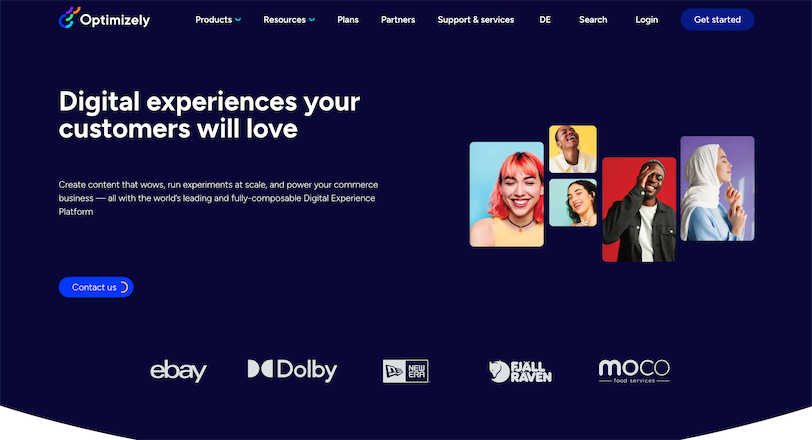
A/B testing is the practice of running experimentations on different versions of a web page, email, or landing page in order to find the one that performs better in terms of conversion. If you’re part of a larger organization that wants to use email marketing campaigns at maximum capacity, an A/B testing tool like Optimizely can make the difference in your potential revenue.
Pros
- Optimizely helps you run experiments at scale to find the best email combinations for your business.
Cons
- This solution can be overkill for teams who simply want to test their emails or don’t have an audience large enough to perform A/B testing.
- Not all prices are disclosed on the website; you must contact the sales team to receive them.
When to Use Optimizely
Optimizely is a great option when you run large email campaigns and want to optimize their open rate and conversions by running A/B testing.
Conclusion
From poor design and typos to broken images and links, the details make a big difference when it comes to email campaigns. In this article, you learned the consequences of not testing your emails and how much revenue loss may be at stake from a simple variation error. Then you explored ten of the top email testing tools currently available to get a better idea of which may be of use to you. If you want to manage all your product-driven communications like emails, web and mobile push, SMS, in-app inbox, and chat, Courier is the one-stop development platform for your team. Courier provides a powerful API for developers and a web studio for non-technical users to design notifications and automated sequences and to view cross-channel analytics. It integrates with over fifty communication providers and can automate testing with the tools listed above in a dedicated testing environment—making it possible to develop, scale, and manage notifications faster and with fewer resources.
